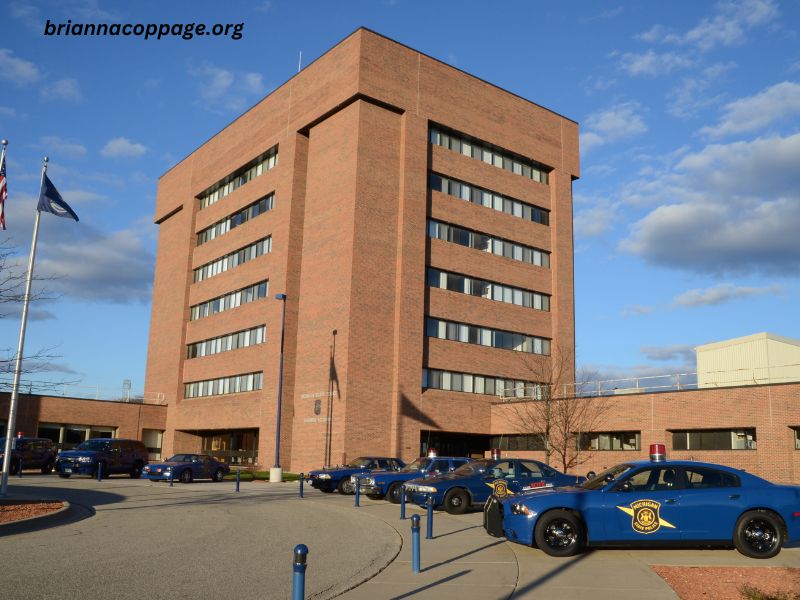The Police Academy is a time-honored institution that prepares individuals for law enforcement careers, equipping them with the knowledge, skills, and physical training needed to be successful police officers. But how long does the process take? The length of police academy training can vary depending on the country, state, or region, the specific academy, and the type of law enforcement role for which the individual is training. Typically, police academy training lasts between 16 and 36 weeks, although this can differ based on factors like the academy’s curriculum, the jurisdiction’s requirements, and the training schedule.
This article will explore the duration of police academy programs in different regions, the factors that influence the length of training, and the stages of the academy that trainees typically go through. It will also cover what prospective police officers can expect during their academy training and how they can prepare for it.
General Overview of Police Academy Duration
In the United States, the length of time spent in a police academy generally ranges from about 16 to 36 weeks. However, there are significant variations depending on the specific state, department, and the academy’s standards. Larger police departments, such as those in major cities like New York, Los Angeles, or Chicago, might have more extensive training programs, while smaller, rural departments may have shorter training periods.
For example:
- Basic police training for recruits typically lasts around 20 to 30 weeks in most U.S. states. However, some states, like California and New York, might extend their programs up to 30-36 weeks, allowing more time for specialized courses and practical training.
- Federal law enforcement agencies like the FBI, DEA, or U.S. Marshals generally have their own training academies. These programs tend to be longer, with FBI Special Agent training lasting about 20 weeks at the FBI Academy in Quantico, Virginia, for example.
- Internationally, the length of police academy programs can vary even more. In countries like the UK, police training might last for about 16 to 18 weeks, while in some European countries, training may be significantly longer, sometimes extending beyond a year.
Factors That Influence Police Academy Duration
Several factors determine how long a police academy program will last. These can range from the country’s legal and procedural requirements to the specific needs of the law enforcement agency and the academy’s curriculum. Here are some of the key factors that affect the duration:
- Training Requirements and Standards: Every country, state, or region has its own set of requirements for becoming a police officer. Some regions mandate a minimum number of hours for academy training, while others may have more flexible standards. For example, in the U.S., some states may require recruits to undergo a minimum of 600 to 1,000 hours of training, while others may have even higher requirements.
- Type of Police Force: Different types of law enforcement officers—such as municipal police officers, state troopers, or federal agents—may have different training durations. Federal agencies often have their own comprehensive and specialized training programs, which can be much longer than those offered by local or state academies.
- Curriculum and Specialty Training: The curriculum is a significant determining factor in how long police academy training takes. Many police academies offer basic law enforcement training in areas such as criminal law, ethics, patrol procedures, and traffic enforcement. However, some academies offer advanced training in specialized areas such as counter-terrorism, cybercrime, or forensic investigations, which can extend the length of the program.
- Physical Fitness and Training Schedule: Physical fitness is a crucial component of police academy training, and this can influence the overall duration. In many programs, recruits must undergo regular physical fitness tests and complete training in defensive tactics, weapon handling, and high-stress physical scenarios. Some academies may also have boot-camp style components that last longer than standard classroom-based learning.
- Field Training: After completing the basic academy coursework, recruits typically participate in field training, which adds additional time to the process. Field training often involves working alongside experienced officers in real-world scenarios. This hands-on experience is crucial for reinforcing what recruits learned in the classroom.
Stages of Police Academy Training
Though the specific details may vary by academy, police academy training generally follows a similar structure across different regions. Here is a general breakdown of the stages recruits typically go through during their time at the academy:
- Orientation and Introduction:
- The first few days or weeks of the academy are typically devoted to orientation. During this time, recruits learn about the academy’s rules and expectations, undergo fitness assessments, and get acquainted with their instructors and fellow trainees.
- Basic administrative tasks like uniform distribution, schedule reviews, and introductions to police equipment may also take place during this phase.
- Classroom Instruction:
- The majority of police academy training is spent in classrooms, where recruits learn the legal, ethical, and procedural foundations of law enforcement.
- Topics often covered include criminal law, constitutional law, police ethics, investigation procedures, patrol procedures, crisis management, traffic enforcement, and report writing.
- Recruits are often tested on this knowledge, and their performance on exams can play a significant role in their ability to move forward in the program.
- Physical Fitness and Defensive Tactics:
- Physical fitness is a critical part of police work, and academies ensure that recruits are physically capable of performing the strenuous activities required in the field.
- Recruits undergo fitness training, which often includes running, strength training, and endurance tests. Additionally, they learn defensive tactics like hand-to-hand combat, self-defense, and how to use force when necessary.
- These components are often physically demanding, and failure to meet the fitness requirements can result in dismissal from the academy.
- Weapon and Firearms Training:
- Police academies also focus heavily on teaching recruits how to safely handle and use firearms. This often includes instruction on gun safety, maintenance, and shooting techniques. Recruits are also taught how to properly use other weapons, such as tasers or batons, and how to deal with non-lethal confrontations.
- Firearms training typically involves both classroom learning and live-fire exercises at shooting ranges.
- Scenario-based Training:
- One of the most valuable components of police academy training is scenario-based learning, where recruits are put through simulated situations that mimic real-world police encounters.
- These might involve role-playing as both police officers and civilians, responding to emergency situations like hostage rescues, car chases, or traffic stops. These exercises allow recruits to practice applying their training in realistic contexts.
- Some academies also use simulated weapons or virtual training programs to give recruits a safe environment to practice decision-making under stress.
- Field Training:
- After completing the classroom-based training, recruits often transition into field training, where they work with experienced officers to apply what they’ve learned in real situations.
- Field training can last several weeks and allows recruits to gain firsthand experience on patrol, in courtrooms, and at crime scenes.
What Can You Expect from Police Academy Training?
Police academy training can be both physically and mentally demanding, and recruits are expected to meet high standards in order to graduate. The program is designed to prepare individuals for the wide variety of challenges they will face in law enforcement, from high-speed chases to de-escalating potentially dangerous situations.
While training may feel overwhelming at times, it is important to note that it’s designed to simulate the pressure and stress of police work, ensuring recruits are equipped to handle whatever comes their way. Physical fitness tests, long hours, and the responsibility of learning how to uphold the law all contribute to making the experience rigorous but rewarding.
Conclusion
The length of police academy training varies based on location, academy, and specific law enforcement needs. Typically, police academies last anywhere from 16 to 36 weeks, with larger departments often requiring more extensive training. The program involves multiple stages, including classroom instruction, physical training, weapons handling, and field training, all aimed at preparing recruits for a career in law enforcement.
Becoming a police officer is a long journey that requires dedication, resilience, and a strong sense of responsibility. By understanding the components of police academy training, prospective officers can better prepare themselves for the challenging but rewarding path ahead.






